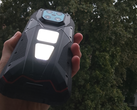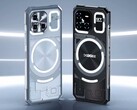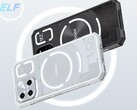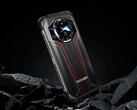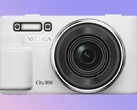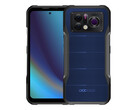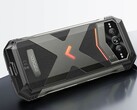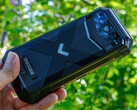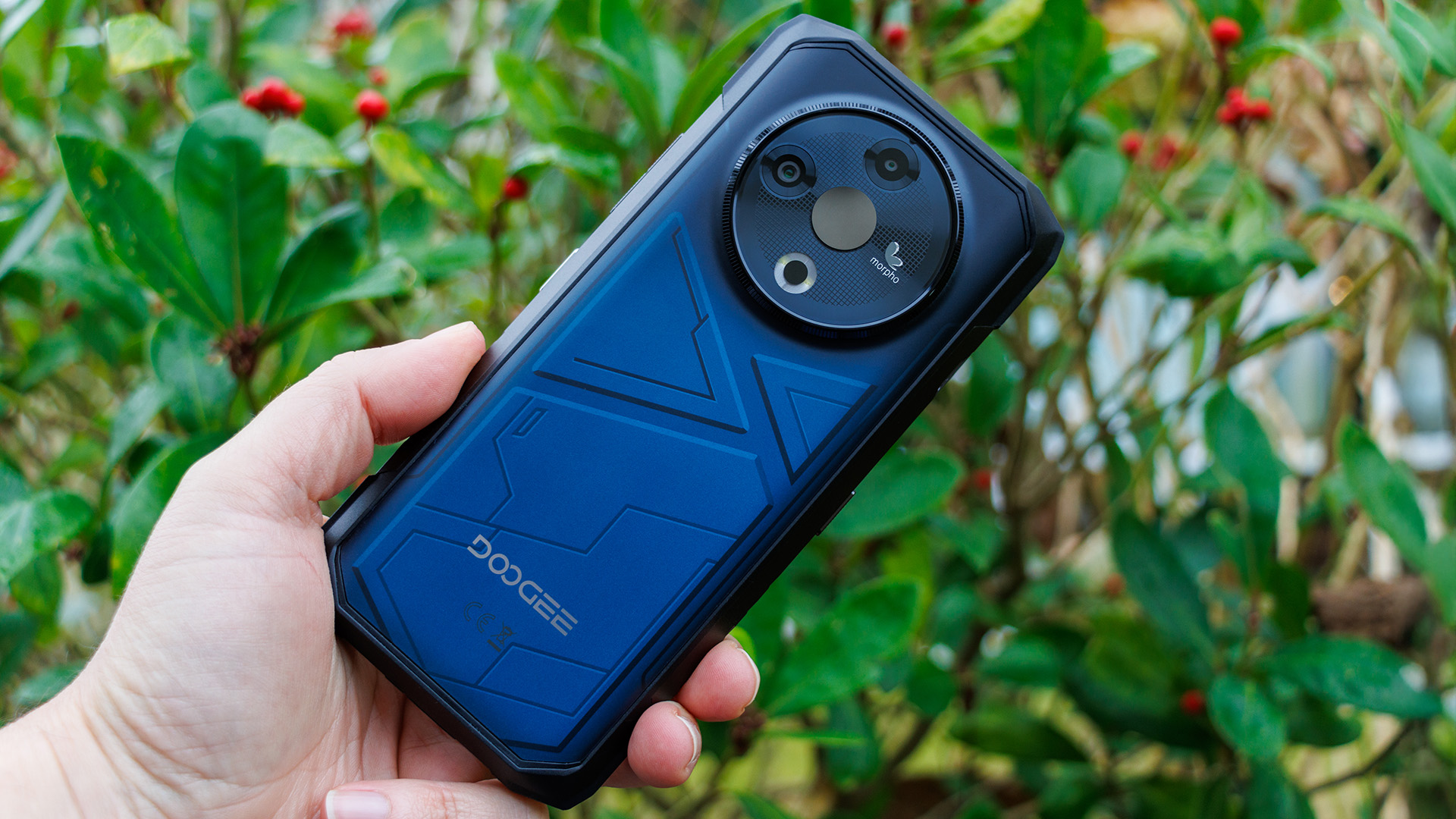
Doogee Fire 6 review - A thermal imaging camera and robustness in the affordable rugged smartphone
Not for those seeking speed.
In terms of its price, the Doogee Fire 6 positions itself in the midrange, while offering a large 10-Ah battery, thermal imaging camera, and protection against rough handling. Its SoC is not only exotic, but also slow. Find out here about what else the rugged smartphone has to offer and what its weaknesses are.Daniel Schmidt, 👁 Daniel Schmidt (translated by Mark Riege) Published 🇩🇪 🇫🇷 ...
Verdict - The weak SoC slows down the Doogee Fire 6
With an MSRP around 400 Euros (~$417), the Doogee Fire 6 positions itself in the midrange, while offering a particularly robust case, large battery, and integrated thermal imaging camera as core functions. If we only look at those, the rugged smartphone represents a good offer, although it shows itself weaker in other areas.
The camera performance is meager, and not only is the integrated SoC from UNISOC aged at this point, but it is also slow. At the same time, sustainability is also not a focus of the Fire 6, and it shows deficits in this regard in all areas. Even though the battery is large and lasts for a long time, it cannot be recharged quickly. In terms of connectivity, the WLAN is slow and 5G is not supported.
Pros
Cons
Price and Availability
The Doogee Fire 6 is available directly from the manufacturer's shop, and there are regularly some additional rebates, making the price already lower than its original MSRP. At the time of the test, it is even more affordable from Amazon.
Possible Alternatives in Comparison
Image | Model / Review | Price | Weight | Drive | Display |
|---|---|---|---|---|---|
| Doogee Fire 6 Unisoc T7200 (T606) ⎘ ARM Mali-G57 MP1 ⎘ 6 GB Memory, 256 GB UFS 2.1 | Amazon: 1. $11.99 MAOUICI Tempered Glass for D... 2. $3.97 Mr.Shield Screen Protector c... 3. $19.99 Bluetooth V5.4 Earbuds Compa... List Price: 400€ | 348 g | 256 GB UFS 2.2 Flash | 6.56" 1612x720 269 PPI IPS | |
| Doogee V Max Plus MediaTek Dimensity 7050 ⎘ ARM Mali-G68 MP4 ⎘ 16 GB Memory, 512 GB UFS 2.1 | Amazon: 1. $474.99 DOOGEE V MAX Plus(2024) 5G R... 2. $4.99 Mr.Shield Screen Protector c... 3. $34.99 SiuVorZhi LCD Display Compat... List Price: 599€ | 539 g | 512 GB UFS 2.2 Flash | 6.58" 2408x1080 401 PPI IPS | |
| Samsung Galaxy XCover 7 MediaTek Dimensity 6100+ ⎘ ARM Mali-G57 MP2 ⎘ 6 GB Memory, 128 GB UFS 2.1 | Amazon: 1. $6.98 3 Pack Tempered Glass Screen... 2. $7.99 Suttkue for Samsung Galaxy X... 3. $6.99 Supershieldz (2 Pack) Design... List Price: 359€ | 240 g | 128 GB UFS 2.1 Flash | 6.60" 2408x1080 400 PPI PLS | |
| Oukitel WP35 MediaTek Dimensity 6100+ ⎘ ARM Mali-G57 MP2 ⎘ 8 GB Memory, 256 GB eMMC | Amazon: 1. $37.88 SiuVorZhi LCD Display Compat... 2. $38.99 SECRETIGER LCD Screen Displa... 3. $37.99 SWARK New LCD Display Replac... List Price: 285€ | 360 g | 256 GB eMMC 5.1 Flash | 6.60" 2408x1080 400 PPI IPS |
Table of Contents
- Verdict - The weak SoC slows down the Doogee Fire 6
- Specifications: Doogee Fire 6
- Case and Equipment - Doogee Fire 6 fulfills parts of MIL-STD-810H
- Communication and Operation - Good fingerprint reader and sluggish touchscreen
- Software and Sustainability - Android 14 and hardly any updates
- Cameras - Doogee Fire 6 comes with a thermal imaging camera
- Display - IPS panel free of PWM in the Fire 6
- Performance, Emissions, and Battery Life
- Notebookcheck Overall Evaluation
The Doogee Fire 6 is meant for those who are looking for a robust smartphone that offers a long battery life and a thermal imaging camera. It comes with Google Android 14 and offers Dual-SIM as well as a slot for a microSD card. It doesn't support 5G, though.
Find out in our test, whether the Fire 6 can convince us.
Specifications: Doogee Fire 6
Case and Equipment - Doogee Fire 6 fulfills parts of MIL-STD-810H
Holding it in the hand, the Doogee Fire 6 leaves a very solid impression and also brings a hefty weight to the scale at 348 grams (~12.3 oz). Not only is it water and dustproof according to IP68 and IP69K, but it also resists pressure and steam cleaning. The rugged smartphone is also protected from drops according to MIL-STD-810H, even though Doogee hasn't specified the exact extent of this.
The USB port turns out not particularly fast in our copy test. In our standard setup (Samsung 980 Pro SSD in Asus ROG Strix Arion case), it was unable to provide the SSD with sufficient power, so that we had to use a Samsung Portable SSD T7 instead.
A positive point is the ability to expand the storage of the Fire 6 via microSD card, although the slot wasn't particularly fast in the copy test with our Angelbird AV Pro V60 reference card.
| SD Card Reader - average JPG Copy Test (av. of 3 runs) | |
| Oukitel WP35 (Angelbird V60) | |
| Samsung Galaxy XCover 7 (Angelbird V60) | |
| Average of class Smartphone (5.72 - 58.9, n=68, last 2 years) | |
| Doogee Fire 6 (Angelbird AV Pro V60) | |
| Doogee V Max Plus (Angelbird AV Pro V60) | |
Cross Platform Disk Test (CPDT)
Communication and Operation - Good fingerprint reader and sluggish touchscreen
The Dooogee Fire 6 doesn't support the modern communication standards. For mobile communication, it offers LTE with a solid frequency band coverage and for WLAN, Wi-Fi 5 is available. Even though the connection is stable in the test with our Asus ROG Rapture GT-AXE11000 reference router, it isn't particularly fast.
The smartphone offers full Dual-SIM support with two Nano-SIM cards but doesn't support eSIM. While the voice quality is decent, there is no noise suppression.
The fingerprint sensor, which is integrated in the power key, delivers very good recognition rates and is also fast. Face recognition via the front camera is also available, but it only works satisfactorily in good light conditions and is also less secure. The ERM vibration motor is powerful but also very spongy.
The responsiveness of the capacitive touchscreen is often sluggish in our test, particularly in the upper area of the display. In such cases, it only helps if you touch the area longer and harder. We are unable to determine conclusively whether this is only a fault of our test unit or a problem of the whole series of the smartphone.
| Networking | |
| Doogee Fire 6 | |
| iperf3 transmit AXE11000 | |
| iperf3 receive AXE11000 | |
| Doogee V Max Plus | |
| iperf3 transmit AXE11000 | |
| iperf3 receive AXE11000 | |
| Samsung Galaxy XCover 7 | |
| iperf3 transmit AXE11000 | |
| iperf3 receive AXE11000 | |
| Oukitel WP35 | |
| iperf3 transmit AXE11000 | |
| iperf3 receive AXE11000 | |
| Average 802.11 a/b/g/n/ac | |
| iperf3 transmit AXE11000 | |
| iperf3 receive AXE11000 | |
| Average of class Smartphone | |
| iperf3 transmit AXE11000 | |
| iperf3 receive AXE11000 | |
Software and Sustainability - Android 14 and hardly any updates
In the area of sustainability, Doogee has a lot of catching up to do. This already begins with the packaging, which is completely covered in a shrink-wrap plastic foil, and there are also only plastic inlays inside. There are neither specifications on the use of recycled materials, nor is there a sustainability report. There are also no provisions for the users to repair parts of the smartphone themselves.
Google Android 14 is used as the operating system, and there is no bloatware. Doogee doesn't offer any detailed specifications on updates. When we asked, the answer was a maximum of one year.
Cameras - Doogee Fire 6 comes with a thermal imaging camera
While the front camera of the Doogee Fire 6 nominally offers a satisfactory resolution, the recordings are not particularly detailed. But what is even more annoying is the color reproduction. In our example picture, the gray sweater appears with a greenish tint.
The back of the smartphone houses the 50-MP main sensor and the thermal imaging camera. The results from the main camera appear washed out, and the zoom qualities also leave something to be desired. However, it will surely still be sufficient for simpler documentation tasks.
The thermal imaging camera of the Fire 6 offers a decent performance. However, in comparison to our IR thermometer, the surface temperatures shown deviate by about 4 °C (7 °F), at times they are higher and at others, lower.
The main camera allows you to record videos in Full HD at 30 FPS at best, with the front camera in 720p at 30 FPS and the thermal imaging camera in 960 x 720 Pixels at 24 FPS. There is no noticeable image stabilization.
Image comparison
Choose a scene and navigate within the first image. One click changes the position on touchscreens. One click on the zoomed-in image opens the original in a new window. The first image shows the scaled photograph of the test device.
Main CameraMain Camera5x ZoomLow-Light
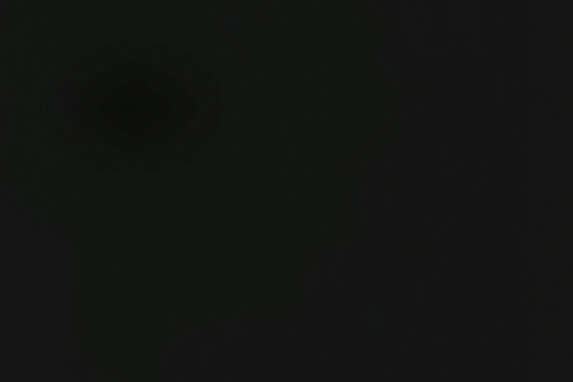
Display - IPS panel free of PWM in the Fire 6
The IPS display of the Doogee Fire 6 offers a refresh rate of 90 Hz and doesn't support HDR. But the latter isn't a problem, due to the rather low brightness. The brightness distribution is even, although the contrast ratio could have been a bit crisper.
The low minimum brightness and lack of PWM should be positively emphasized. Even though we can still measure some high-frequency flickering at minimum brightness, this shouldn't be able to lead to any problems at all.
In our test with Calman, the color reproduction shows a few deviations, and the covered color space is small, but this isn't very noticeable in everyday use.
| |||||||||||||||||||||||||
Brightness Distribution: 93 %
Center on Battery: 435 cd/m²
Contrast: 837:1 (Black: 0.52 cd/m²)
ΔE ColorChecker Calman: 7 | ∀{0.5-29.43 Ø4.78}
ΔE Greyscale Calman: 6.2 | ∀{0.09-98 Ø5}
88.7% sRGB (Calman 2D)
Gamma: 2.86
CCT: 7407 K
| Doogee Fire 6 IPS, 1612x720, 6.6" | Doogee V Max Plus IPS, 2408x1080, 6.6" | Samsung Galaxy XCover 7 PLS, 2408x1080, 6.6" | Oukitel WP35 IPS, 2408x1080, 6.6" | |
|---|---|---|---|---|
| Screen | 21% | 19% | 7% | |
| Brightness middle (cd/m²) | 435 | 552 27% | 600 38% | 552 27% |
| Brightness (cd/m²) | 429 | 539 26% | 561 31% | 549 28% |
| Brightness Distribution (%) | 93 | 90 -3% | 89 -4% | 94 1% |
| Black Level * (cd/m²) | 0.52 | 0.23 56% | 0.57 -10% | 0.42 19% |
| Contrast (:1) | 837 | 2400 187% | 1053 26% | 1314 57% |
| Colorchecker dE 2000 * | 7 | 6.7 4% | 5.07 28% | 7.22 -3% |
| Colorchecker dE 2000 max. * | 12.1 | 12.1 -0% | 8.1 33% | 13.09 -8% |
| Greyscale dE 2000 * | 6.2 | 14 -126% | 5.7 8% | 10.1 -63% |
| Gamma | 2.86 77% | 0.27 815% | 2.249 98% | 1.785 123% |
| CCT | 7407 88% | 7499 87% | 8162 80% | 9036 72% |
* ... smaller is better
Screen Flickering / PWM (Pulse-Width Modulation)
| Screen flickering / PWM detected | 36520 Hz | ||
The display backlight flickers at 36520 Hz (worst case, e.g., utilizing PWM) . The frequency of 36520 Hz is quite high, so most users sensitive to PWM should not notice any flickering. In comparison: 53 % of all tested devices do not use PWM to dim the display. If PWM was detected, an average of 8152 (minimum: 5 - maximum: 343500) Hz was measured. | |||
Display Response Times
| ↔ Response Time Black to White | ||
|---|---|---|
| 35.76 ms ... rise ↗ and fall ↘ combined | ↗ 19.7 ms rise | |
| ↘ 16.06 ms fall | ||
| The screen shows slow response rates in our tests and will be unsatisfactory for gamers. In comparison, all tested devices range from 0.1 (minimum) to 240 (maximum) ms. » 93 % of all devices are better. This means that the measured response time is worse than the average of all tested devices (20.3 ms). | ||
| ↔ Response Time 50% Grey to 80% Grey | ||
| 52.91 ms ... rise ↗ and fall ↘ combined | ↗ 26.5 ms rise | |
| ↘ 26.41 ms fall | ||
| The screen shows slow response rates in our tests and will be unsatisfactory for gamers. In comparison, all tested devices range from 0.165 (minimum) to 636 (maximum) ms. » 90 % of all devices are better. This means that the measured response time is worse than the average of all tested devices (31.7 ms). | ||
Performance, Emissions, and Battery Life
The Doogee Fire 6 is run by an Unisoc T606 (the real label is actually T7200) and can use 6 GB RAM. At this point, the SoC is five years old, which is noticeable, because the system shows some stutters and jerks at times.
The surface temperatures remain unproblematic at all times, and we did not encounter any throttling under load. The speaker can get very loud, strongly emphasizing the highs at that time and also producing some distortions. But at medium volume, the sound reproduction is decent.
The Doogee Fire 6 is able to shine with its battery life. The powerful 10,400 mAh battery achieves a runtime of more than 33 hours in our WLAN test. During standby, the Doogee smartphone is also very frugal: If you simply forget it in a drawer for a week, the battery charge is only reduced by barely 20%. On the other hand, it is best if you charge it overnight, since a full recharge takes 5 hours and 55 minutes in our test (50% after 2 h 19 min).
| Antutu v10 - Total Score | |
| Average of class Smartphone (142748 - 3269237, n=152, last 2 years) | |
| Doogee V Max Plus | |
| Doogee Fire 6 | |
| Average Unisoc T7200 (T606) (221540 - 290675, n=7) | |
| CrossMark - Overall | |
| Average of class Smartphone (187 - 2674, n=130, last 2 years) | |
| Doogee V Max Plus | |
| Samsung Galaxy XCover 7 | |
| Doogee Fire 6 | |
| Average Unisoc T7200 (T606) (339 - 376, n=6) | |
| Geekbench AI | |
| Single Precision TensorFlow NNAPI 1.1 | |
| Average of class Smartphone (122 - 4122, n=41, last 2 years) | |
| Doogee V Max Plus | |
| Single Precision TensorFlow NNAPI 1.2 | |
| Average of class Smartphone (51 - 2472, n=55, last 2 years) | |
| Doogee Fire 6 | |
| Average Unisoc T7200 (T606) (n=1) | |
| Half Precision TensorFlow NNAPI 1.2 | |
| Average of class Smartphone (51 - 9453, n=55, last 2 years) | |
| Doogee Fire 6 | |
| Average Unisoc T7200 (T606) (n=1) | |
| Quantized TensorFlow NNAPI 1.2 | |
| Average of class Smartphone (123 - 13084, n=55, last 2 years) | |
| Doogee Fire 6 | |
| Average Unisoc T7200 (T606) (n=1) | |
GFXBench (DX / GLBenchmark) 2.7: T-Rex Onscreen | 1920x1080 T-Rex Offscreen
GFXBench 3.0: on screen Manhattan Onscreen OGL | 1920x1080 1080p Manhattan Offscreen
GFXBench 3.1: on screen Manhattan ES 3.1 Onscreen | 1920x1080 Manhattan ES 3.1 Offscreen
GFXBench: on screen Car Chase Onscreen | 1920x1080 Car Chase Offscreen | on screen Aztec Ruins High Tier Onscreen | 2560x1440 Aztec Ruins High Tier Offscreen | on screen Aztec Ruins Normal Tier Onscreen | 1920x1080 Aztec Ruins Normal Tier Offscreen | 3840x2160 4K Aztec Ruins High Tier Offscreen
| 3DMark / Wild Life Unlimited Score | |
| Doogee V Max Plus | |
| Samsung Galaxy XCover 7 | |
| Oukitel WP35 | |
| Doogee Fire 6 | |
| 3DMark / Wild Life Score | |
| Doogee V Max Plus | |
| Samsung Galaxy XCover 7 | |
| Oukitel WP35 | |
| Doogee Fire 6 | |
| 3DMark / Steel Nomad Light Unlimited Score | |
| Doogee V Max Plus | |
| 3DMark / Steel Nomad Light Score | |
| Doogee V Max Plus | |
| 3DMark / Sling Shot Extreme (ES 3.1) Unlimited Physics | |
| Doogee V Max Plus | |
| Oukitel WP35 | |
| Samsung Galaxy XCover 7 | |
| Doogee Fire 6 | |
| 3DMark / Sling Shot Extreme (ES 3.1) Unlimited Graphics | |
| Doogee V Max Plus | |
| Samsung Galaxy XCover 7 | |
| Oukitel WP35 | |
| Doogee Fire 6 | |
| 3DMark / Sling Shot Extreme (ES 3.1) Unlimited | |
| Doogee V Max Plus | |
| Samsung Galaxy XCover 7 | |
| Oukitel WP35 | |
| Doogee Fire 6 | |
| GFXBench (DX / GLBenchmark) 2.7 / T-Rex Onscreen | |
| Doogee V Max Plus | |
| Samsung Galaxy XCover 7 | |
| Doogee Fire 6 | |
| GFXBench (DX / GLBenchmark) 2.7 / T-Rex Offscreen | |
| Doogee V Max Plus | |
| Samsung Galaxy XCover 7 | |
| Doogee Fire 6 | |
| GFXBench 3.0 / Manhattan Onscreen OGL | |
| Doogee V Max Plus | |
| Samsung Galaxy XCover 7 | |
| Doogee Fire 6 | |
| GFXBench 3.0 / 1080p Manhattan Offscreen | |
| Doogee V Max Plus | |
| Samsung Galaxy XCover 7 | |
| Doogee Fire 6 | |
| GFXBench 3.1 / Manhattan ES 3.1 Onscreen | |
| Doogee V Max Plus | |
| Samsung Galaxy XCover 7 | |
| Doogee Fire 6 | |
| GFXBench 3.1 / Manhattan ES 3.1 Offscreen | |
| Doogee V Max Plus | |
| Samsung Galaxy XCover 7 | |
| Doogee Fire 6 | |
| GFXBench / Car Chase Onscreen | |
| Doogee V Max Plus | |
| Samsung Galaxy XCover 7 | |
| Doogee Fire 6 | |
| GFXBench / Car Chase Offscreen | |
| Doogee V Max Plus | |
| Samsung Galaxy XCover 7 | |
| Doogee Fire 6 | |
| GFXBench / Aztec Ruins High Tier Onscreen | |
| Doogee V Max Plus | |
| Samsung Galaxy XCover 7 | |
| Oukitel WP35 | |
| Doogee Fire 6 | |
| GFXBench / Aztec Ruins High Tier Offscreen | |
| Doogee V Max Plus | |
| Samsung Galaxy XCover 7 | |
| Oukitel WP35 | |
| Doogee Fire 6 | |
| GFXBench / Aztec Ruins Normal Tier Onscreen | |
| Doogee V Max Plus | |
| Samsung Galaxy XCover 7 | |
| Oukitel WP35 | |
| Doogee Fire 6 | |
| GFXBench / Aztec Ruins Normal Tier Offscreen | |
| Doogee V Max Plus | |
| Samsung Galaxy XCover 7 | |
| Oukitel WP35 | |
| Doogee Fire 6 | |
| GFXBench / 4K Aztec Ruins High Tier Offscreen | |
| Doogee V Max Plus | |
| Samsung Galaxy XCover 7 | |
| Oukitel WP35 | |
| Doogee Fire 6 | |
| Doogee Fire 6 | Doogee V Max Plus | Samsung Galaxy XCover 7 | Oukitel WP35 | Average 256 GB UFS 2.2 Flash | Average of class Smartphone | |
|---|---|---|---|---|---|---|
| AndroBench 3-5 | 42% | -26% | -80% | -7% | 74% | |
| Sequential Read 256KB (MB/s) | 976.73 | 1860.16 90% | 488.2 -50% | 292 -70% | 901 ? -8% | 2222 ? 127% |
| Sequential Write 256KB (MB/s) | 883.37 | 1611.59 82% | 501 -43% | 149.5 -83% | 723 ? -18% | 1838 ? 108% |
| Random Read 4KB (MB/s) | 203.11 | 239.64 18% | 212 4% | 61.7 -70% | 228 ? 12% | 295 ? 45% |
| Random Write 4KB (MB/s) | 286.2 | 225.34 -21% | 240.2 -16% | 9.4 -97% | 249 ? -13% | 336 ? 17% |
(±) The maximum temperature on the upper side is 43.7 °C / 111 F, compared to the average of 35.2 °C / 95 F, ranging from 21.9 to 247 °C for the class Smartphone.
(+) The bottom heats up to a maximum of 38.2 °C / 101 F, compared to the average of 34 °C / 93 F
(+) In idle usage, the average temperature for the upper side is 30.3 °C / 87 F, compared to the device average of 32.9 °C / 91 F.
3DMark Steel Nomad Stress Test
| 3DMark | |
| Doogee Fire 6 | |
| Wild Life Stress Test Stability | |
| Doogee V Max Plus | |
| Wild Life Stress Test Stability | |
| Wild Life Extreme Stress Test | |
| Steel Nomad Light Stress Test Stability | |
| Samsung Galaxy XCover 7 | |
| Wild Life Stress Test Stability | |
| Wild Life Extreme Stress Test | |
| Oukitel WP35 | |
| Wild Life Stress Test Stability | |
| Wild Life Extreme Stress Test | |
Doogee Fire 6 audio analysis
(+) | speakers can play relatively loud (93.7 dB)
Bass 100 - 315 Hz
(-) | nearly no bass - on average 18.8% lower than median
(+) | bass is linear (3.9% delta to prev. frequency)
Mids 400 - 2000 Hz
(±) | higher mids - on average 6% higher than median
(+) | mids are linear (5% delta to prev. frequency)
Highs 2 - 16 kHz
(±) | higher highs - on average 9.3% higher than median
(±) | linearity of highs is average (7.9% delta to prev. frequency)
Overall 100 - 16.000 Hz
(±) | linearity of overall sound is average (20.2% difference to median)
Compared to same class
» 32% of all tested devices in this class were better, 9% similar, 59% worse
» The best had a delta of 11%, average was 35%, worst was 134%
Compared to all devices tested
» 51% of all tested devices were better, 8% similar, 40% worse
» The best had a delta of 4%, average was 24%, worst was 134%
Samsung Galaxy XCover 7 audio analysis
(+) | speakers can play relatively loud (84.3 dB)
Bass 100 - 315 Hz
(-) | nearly no bass - on average 25.6% lower than median
(±) | linearity of bass is average (10.8% delta to prev. frequency)
Mids 400 - 2000 Hz
(±) | higher mids - on average 6.3% higher than median
(±) | linearity of mids is average (7% delta to prev. frequency)
Highs 2 - 16 kHz
(±) | higher highs - on average 5.4% higher than median
(+) | highs are linear (6.1% delta to prev. frequency)
Overall 100 - 16.000 Hz
(±) | linearity of overall sound is average (20.9% difference to median)
Compared to same class
» 37% of all tested devices in this class were better, 8% similar, 54% worse
» The best had a delta of 11%, average was 35%, worst was 134%
Compared to all devices tested
» 56% of all tested devices were better, 8% similar, 37% worse
» The best had a delta of 4%, average was 24%, worst was 134%
| Battery runtime - WiFi v1.3 | |
| Doogee Fire 6 | |
| Doogee V Max Plus | |
| Samsung Galaxy XCover 7 | |
| Oukitel WP35 | |
Notebookcheck Overall Evaluation
Those who are looking for a robust smartphone with a long battery life and thermal imaging camera can be happy with the Doogee Fire 6. But considering the MSRP, particularly the performance and camera quality could have turned out better.
Doogee Fire 6
- 12/23/2024 v8
Daniel Schmidt
Transparency
The selection of devices to be reviewed is made by our editorial team. The test sample was given to the author by the manufacturer free of charge for the purposes of review. There was no third-party influence on this review, nor did the manufacturer receive a copy of this review before publication. There was no obligation to publish this review. As an independent media company, Notebookcheck is not subjected to the authority of manufacturers, retailers or publishers.
This is how Notebookcheck is testing
Every year, Notebookcheck independently reviews hundreds of laptops and smartphones using standardized procedures to ensure that all results are comparable. We have continuously developed our test methods for around 20 years and set industry standards in the process. In our test labs, high-quality measuring equipment is utilized by experienced technicians and editors. These tests involve a multi-stage validation process. Our complex rating system is based on hundreds of well-founded measurements and benchmarks, which maintains objectivity. Further information on our test methods can be found here.









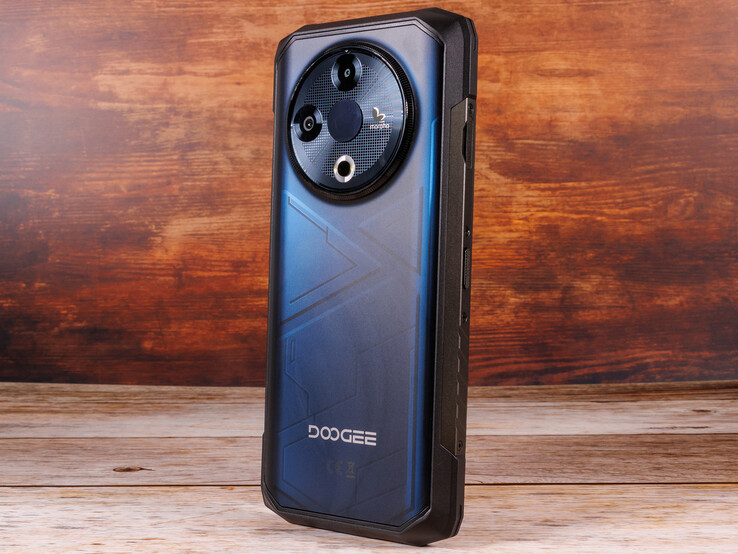






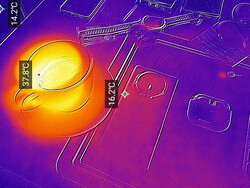

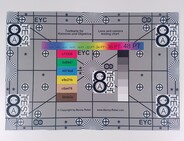


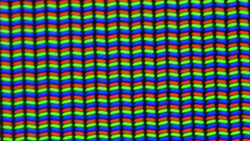

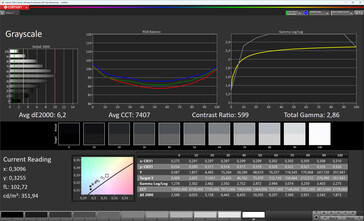
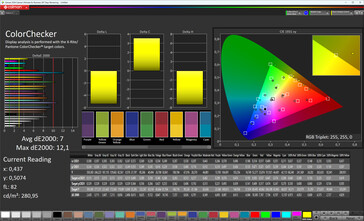
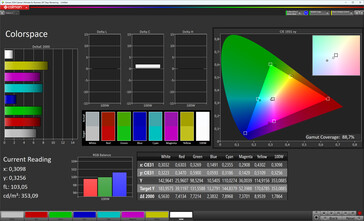
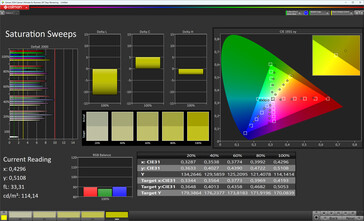
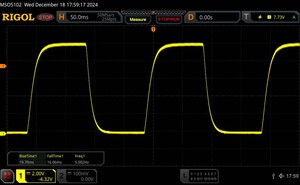
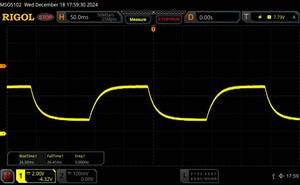
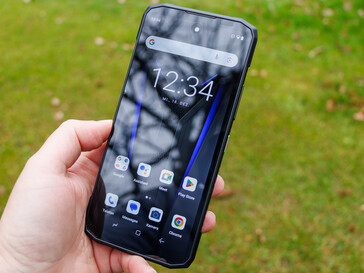
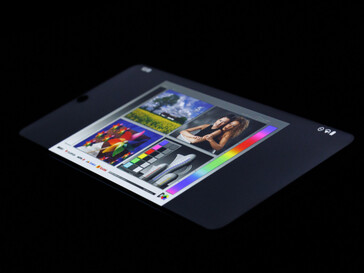
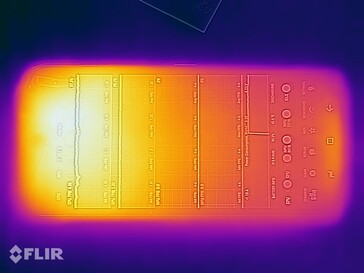
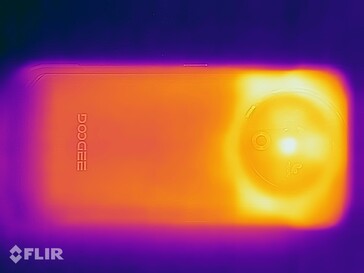
 Total Sustainability Score:
Total Sustainability Score: 